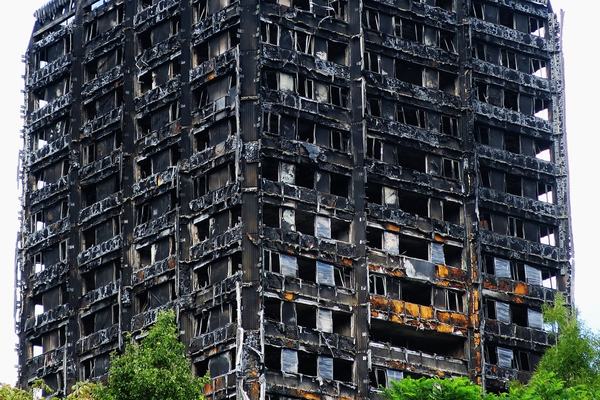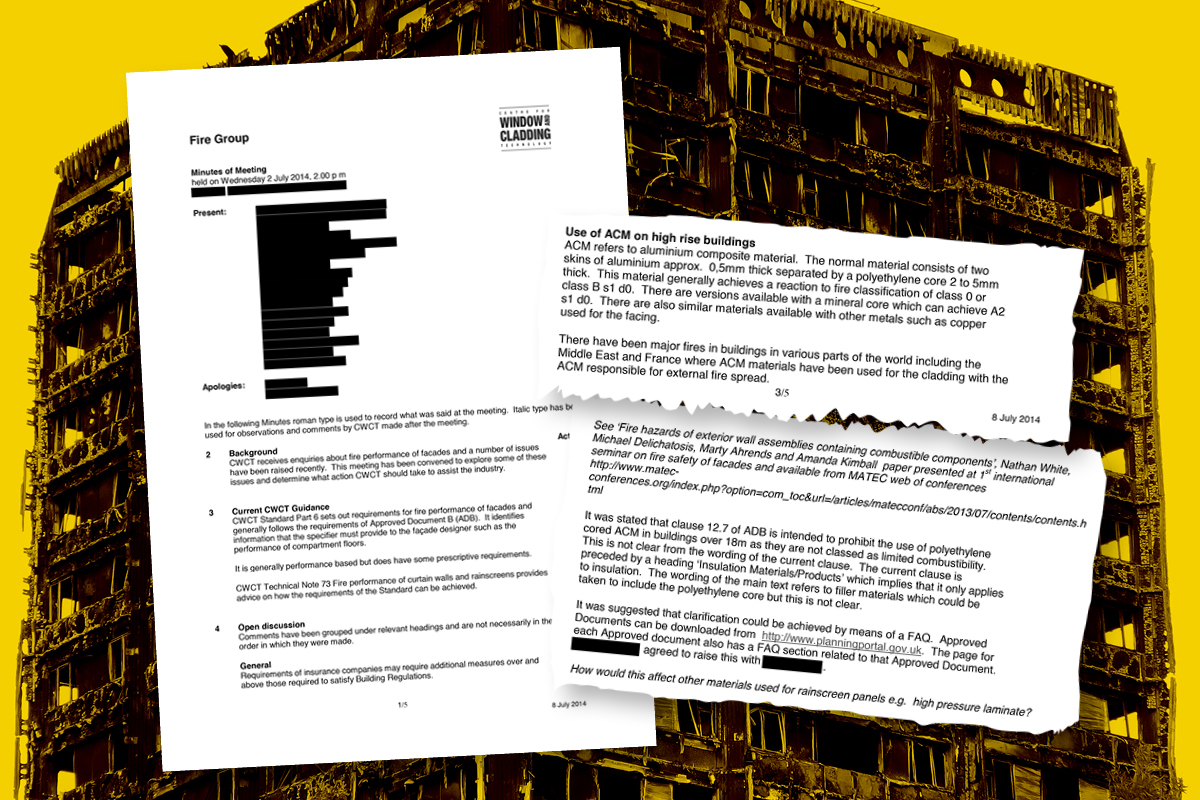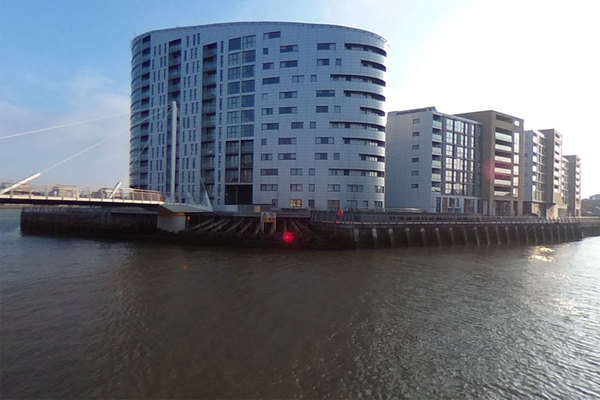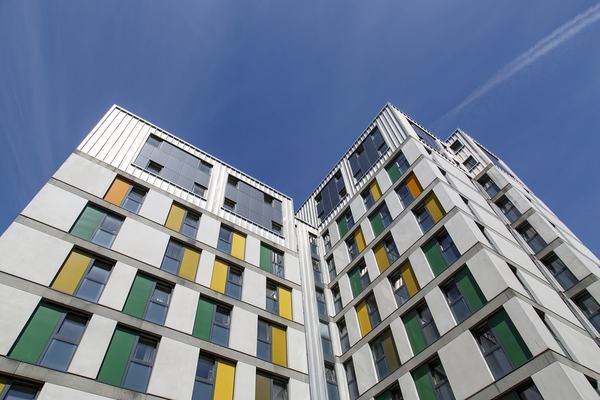You are viewing 1 of your 1 free articles
A specific warning about Grenfell-style cladding the government shrugged off
As minutes reveal government officials were warned about problems with Grenfell-style cladding in 2014, Martin Hilditch says it’s vital we understand why ministers were slow to respond
In the timeline that led to the Grenfell Tower fire, Wednesday 2 July 2014 emerged this week as a key date.
On that day representatives from the then- Department for Communities and Local Government and the Building Research Establishment (BRE) sat down at a meeting of a fire group hosted by the Centre for Window and Cladding Technology.
Up until this week, what was discussed had remained shrouded in secrecy, with the government questioning other attendees’ interpretation of events.
"The newly released minutes reveal that the government failed to act on a specific warning it received about the use of deadly cladding on high-rise blocks"
But now, thanks to minutes of the meeting obtained under the Freedom of Information Act, Inside Housing has been able to shed some light on what was said.
Given that much has been much written about the build-up to Grenfell, it is worth spelling out why we are flagging this as such a significant story this week.
At its most basic, the newly released minutes reveal that the government failed to act on a specific warning it received about the use of deadly cladding on high-rise blocks in the UK.
The warning was about aluminium composite material (ACM) cladding – the type used on Grenfell. The minutes reveal that at the meeting, the risks posed by ACM were raised.
The discussion gave examples of “major fires in buildings in various parts of the world, including the Middle East and France, where ACM materials have been used for the cladding, with the ACM responsible for external fire spread”.
But the significance rests on a crucial section of the minutes, which reveals a specific warning was given about the risks in this country. Attendees were told that official guidance on fire safety – Approved Document B – did not prohibit ACM’s use on high-rise buildings.
The minutes state that attendees were told that the rules were “not clear from the wording of the current clause”.
It was then suggested at the meeting that the government could clarify the guidance by adding to the FAQs section on the relevant part of the its website.
As the government has been rigidly sticking to the line that the guidance was clear, the minutes show that officials were warned this wasn’t the case long before Grenfell.
In fact, the meeting took place two years before the refurbishment of the tower finished.
It is significant because it is an even more specific warning than that issued by coroner Frances Kirkham in 2013, following the inquests into the deaths of six people in 2009’s Lakanal House fire.
She warned that Approved Document B “is a most difficult document to use” and recommended that the then-communities secretary Eric Pickles got his department to review it.
A spokesperson for the BRE said that it would be better to make the change through an edit to Approved Document B, rather than an FAQ.
But such a specific warning raises further questions about why government was so slow to respond, and why by the time of Grenfell, no update had been issued.
It’s vital that we come to understand why feet were dragged and who was responsible.
Martin Hilditch, managing editor, Inside Housing
Timeline: a short history of cladding and building regulations
- January 2000 - Following the tower block fire at Garnock Court - which killed a pensioner with disabilities - a report by the Environment, Transport and Regional Affairs Committee concluded that building regulations required "external surfaces (and hence cladding)... should be of a material classified as 'Class O' for spread of fire". It adds: "We do not believe that it should take a serious fire in which many people are killed before all reasonable steps are taken towards minimising the risks [from cladding fires]."
- January 2008 - The British Board of Agrément provides a certificate confirming a Class 0 rating for Reynobond PE, the material later installed on Grenfell Tower
- March 2013 - The coroner investigating the Lakanal House blaze in south London, which killed six, writes to Eric Pickles, communities secretary, advising him to review official guidance contained in Approved Document B "with particular regard to the spread of fire over the external envelope of a building". Mr Pickles replies, indicating that changes will not made until "2016/17"
- July 2014 - At a meeting of the Centre for Window and Cladding Technology, the government is warned that its guidance is not clear enough to prohibit the use of aluminium composite cladding with a polyethylene core (ACM(PE)) on tall buildings, which has been linked to a number of fires worldwide. The Building Research Establishment agrees to draft an 'FAQ' making it clear that this material is prohibited, but never does.
- 14 June 2017 - A kitchen fire at Grenfell Tower, west London, spreads to the recently installed ACM(PE) cladding. The resulting fire totally engulfs the building, trapping residents and killing 72 people.
- 22 June 2017 - The government writes to social landlords claiming ACM(PE) is banned by guidance, despite its failure to clarify this point before the fire. Philip Hammond, chancellor, repeats this claim on the BBC's Andrew Marr Show.
- 17 May 2018 - The government announces plans to ban combustible materials on high rises buildings, and later publishes draft 'clarified' guidance, removing the passage which had been interpretted as permitting 'Class 0' cladding.
The Paper Trail: The Failure of Building Regulations
Read our in-depth investigation into how building regulations have changed over time and how this may have contributed to the Grenfell Tower fire:
Never Again campaign
In the days following the Grenfell Tower fire on 14 June 2017, Inside Housing launched the Never Again campaign to call for immediate action to implement the learning from the Lakanal House fire, and a commitment to act – without delay – on learning from the Grenfell Tower tragedy as it becomes available.
One year on, we have extended the campaign asks in the light of information that has emerged since.
Here are our updated asks:
GOVERNMENT
- Act on the recommendations from Dame Judith Hackitt’s review of building regulations to tower blocks of 18m and higher. Commit to producing a timetable for implementation by autumn 2018, setting out how recommendations that don’t require legislative change can be taken forward without delay
- Follow through on commitments to fully ban combustible materials on high-rise buildings
- Unequivocally ban desktop studies
- Review recommendations and advice given to ministers after the Lakanal House fire and implement necessary changes
- Publish details of all tower blocks with dangerous cladding, insulation and/or external panels and commit to a timeline for remedial works. Provide necessary guidance to landlords to ensure that removal work can begin on all affected private and social residential blocks by the end of 2018. Complete quarterly follow-up checks to ensure that remedial work is completed to the required standard. Checks should not cease until all work is completed.
- Stand by the prime minister’s commitment to fully fund the removal of dangerous cladding
- Fund the retrofitting of sprinkler systems in all tower blocks across the UK (except where there are specific structural reasons not to do so)
- Explore options for requiring remedial works on affected private sector residential tower blocks
LOCAL GOVERNMENT
- Take immediate action to identify privately owned residential tower blocks so that cladding and external panels can be checked
LANDLORDS
- Publish details of the combinations of insulations and cladding materials for all high rise blocks
- Commit to ensuring that removal work begins on all blocks with dangerous materials by the end of 2018 upon receipt of guidance from government
- Publish current fire risk assessments for all high rise blocks (the Information Commissioner has required councils to publish and recommended that housing associations should do the same). Work with peers to share learning from assessments and improve and clarify the risk assessment model.
- Commit to renewing assessments annually and after major repair or cladding work is carried out. Ensure assessments consider the external features of blocks. Always use an appropriate, qualified expert to conduct assessments.
- Review and update evacuation policies and ‘stay put’ advice in the light of risk assessments, and communicate clearly to residents
- Adopt Dame Judith Hackitt’s recommended approach for listening to and addressing tenants’ concerns, with immediate effect
CURRENT SIGNATORIES:
- Chartered Institute of Housing
- G15
- National Federation of ALMOs
- National Housing Federation
- Placeshapers






